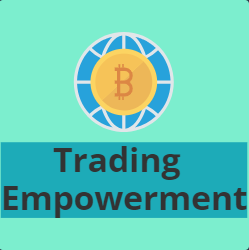Embarking on the journey of creating your own trading robot is both thrilling and rewarding. In this comprehensive guide, we will delve into the intricacies of how to build a trading robot, offering valuable insights, expert advice, and practical tips to ensure your success in the dynamic world of automated trading.
Understanding the Basics of Automated Trading
Understanding the basics of automated trading is pivotal for anyone venturing into the dynamic world of financial markets. At its core, automated trading involves the use of algorithms to execute pre-defined trading strategies. This method replaces the traditional manual approach, enabling faster and more efficient trade execution. Traders delve into algorithmic trading to capitalize on market opportunities, reduce human error, and execute trades with precision.
In the realm of automated trading, algorithmic strategies are formulated based on various factors, including technical indicators, market trends, and statistical analysis. Traders leverage quantitative models to make data-driven decisions, allowing for quicker responses to market fluctuations. Additionally, understanding the basics involves grasping the significance of back testing, where historical data is used to assess the viability and effectiveness of a trading strategy before applying it to live markets.
Furthermore, automated trading extends beyond individual stock markets to encompass diverse financial instruments like forex, commodities, and cryptocurrencies. Traders need to comprehend the nuances of these markets and tailor their automated strategies accordingly. Whether one is a seasoned trader or a newcomer, having a solid understanding of the basics lays the foundation for successful navigation in the intricate landscape of automated trading.
Selecting the Right Programming Language
When it comes to building a trading robot, one of the critical decisions is selecting the right programming language. This choice profoundly influences the efficiency, flexibility, and overall success of your automated trading system. Below are key considerations and a list of popular programming languages, each with its own set of advantages and considerations:
Considerations:
- Ease of Learning: Opt for a language that aligns with your existing skill set or is relatively easy to learn if you’re a beginner.
- Community Support: A robust community can be invaluable. Choose a language with an active community that provides support, resources, and a wealth of shared knowledge.
- Execution Speed: Trading demands swift execution. Consider languages known for their fast execution speed to ensure your trading robot responds promptly to market changes.
- Libraries and Frameworks: Evaluate the availability of libraries and frameworks that can simplify the development process. A language with a rich ecosystem can save time and effort.
- Compatibility with APIs: Seamless integration with brokerage APIs is crucial. Ensure the language you choose supports the APIs of your preferred brokerage platforms.
Popular Programming Languages:
- Python:
- Advantages: Known for its simplicity and readability, Python is widely used in finance. It offers extensive libraries like Pandas and NumPy, making data analysis and manipulation efficient.
- Java:
- Advantages: Java is renowned for its platform independence, making it suitable for diverse operating systems. Its strong object-oriented programming paradigm enhances code organization.
- C++:
- Advantages: Recognized for its high performance and efficiency, C++ is suitable for resource-intensive applications. It provides low-level memory control, crucial for algorithmic trading.
- R:
- Advantages: Specialized for statistical computing, R is advantageous for traders who heavily rely on statistical analysis and modeling in their strategies.
- JavaScript:
- Advantages: JavaScript is commonly used for web-based trading platforms. Its versatility allows for both server-side and client-side scripting.
- MATLAB:
- Advantages: MATLAB is preferred for its built-in financial toolbox, making it easier to implement mathematical and financial models.
Remember, the best programming language depends on your specific needs and preferences. Consider these factors carefully to ensure your chosen language aligns seamlessly with the goals of your automated trading project.
Setting Up a Development Environment
Setting up a development environment is a crucial initial step in the journey of building a trading robot. This process involves creating a workspace that facilitates efficient coding, testing, and debugging of your algorithmic trading strategies. Here’s a closer look at the key aspects involved in setting up a robust development environment:
Firstly, it’s essential to choose the right integrated development environment (IDE) or code editor. Popular choices include Visual Studio Code, PyCharm, and Jupyter Notebooks, each offering features that enhance the coding experience. Selecting an IDE that aligns with your programming language choice ensures a smooth workflow and efficient code organization.
Designing Your Trading Strategy
| Key Components | Description |
| Technical Indicators | Incorporate widely used technical indicators such as Moving Averages, Relative Strength Index (RSI), and Bollinger Bands. Analyze market trends and potential entry/exit points. |
| Fundamental Analysis | Consider economic indicators, earnings reports, and company news. Evaluate the financial health of assets to make informed decisions based on the broader market landscape. |
| Risk Management | Develop a robust risk management strategy, defining acceptable risk levels per trade. Implement tools like stop-loss orders and position sizing to protect your capital. |
| Timeframes | Choose appropriate timeframes for your trading strategy, whether short-term intraday trading or longer-term swing trading. Align your strategy with your preferred trading style. |
| Backtesting | Rigorously backtest your strategy using historical data. Evaluate its performance under various market conditions to identify strengths, weaknesses, and areas for improvement. |
| Automation | Explore automation options using programming languages. Implement algorithms that execute your strategy consistently and without emotional biases. |
Designing your trading strategy involves a careful combination of key components to ensure its effectiveness in the dynamic financial markets. Technical indicators provide valuable insights into market trends, while fundamental analysis considers broader economic factors and company-specific information. An integral part of your strategy is risk management, encompassing tools like stop-loss orders to protect your investments. Selecting suitable timeframes aligns your strategy with your preferred trading style, whether short-term or long-term.
Additionally, back testing is a crucial step in evaluating your strategy’s historical performance, identifying areas for improvement. Lastly, the option of automation using programming languages enhances consistency and eliminates emotional biases in executing your strategy. Integrating these components thoughtfully creates a well-rounded trading strategy ready for implementation in the live market environment.
Optimizing Execution Speed for Real-Time Trading
Optimizing execution speed is paramount for those engaging in real-time trading, where split-second decisions can make a significant impact. In the context of building a trading robot, this involves refining the code and infrastructure to ensure the fastest possible execution of trading strategies. One crucial aspect is choosing a programming language known for its efficiency and speed, such as C++ or Java, which allows for quick processing and reduces latency in executing trades.
Additionally, developers focus on optimizing algorithms and employing parallel processing techniques to enhance execution speed. This entails breaking down tasks into smaller, parallelize components, allowing the trading system to perform multiple operations simultaneously. By leveraging the power of parallel computing, traders can achieve faster response times to market events, a critical factor in real-time trading where market conditions can change rapidly.

